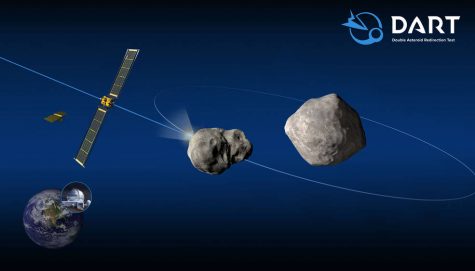Practice Makes Perfect
NASA practices redirecting Asteroid Trajectories
On November 23, 2021, the Double Asteroid Redirection Test (DART) spacecraft launched by NASA will target Dimorphos: a moonlet orbiting asteroid Didymos. Didymos and Dimorphos, known as a non-threatening (will not come into contact with Earth) binary system (the official name for the relationship between the moon and asteroid), will orbit closer than 6 million miles to Earth allowing NASA to test their new asteroid deflection technology. This technology will affect Dimorphos’ orbiting speed by 1%, shifting the moonlet’s orbital period by several minutes, which will affect its overall orbit. Since the binary system orbits Earth as close as it does, ground telescopes and radars can observe and record the change in momentum of Didymos caused by the DART spacecraft.

Organized by the Planetary Defense Coordination Office, this full-scale demonstration, recorded by a camera on the DART spacecraft called DRACO traveling 14,763.8 miles per hour, will take place in September 2022. Along with DRACO, a satellite named LICIACube will also accompany the DART spacecraft and deploy before its collision with Dimorphos. The DART will be the first planetary defense mission to attempt the feat of redirecting an asteroid or other danger from Earth. The DART will also test the kinetic impactor technique by colliding directly with Dimorphos in order to change its orbit. The DART will be the first, but not the last test with the goal of preventing collisions with Earth.






